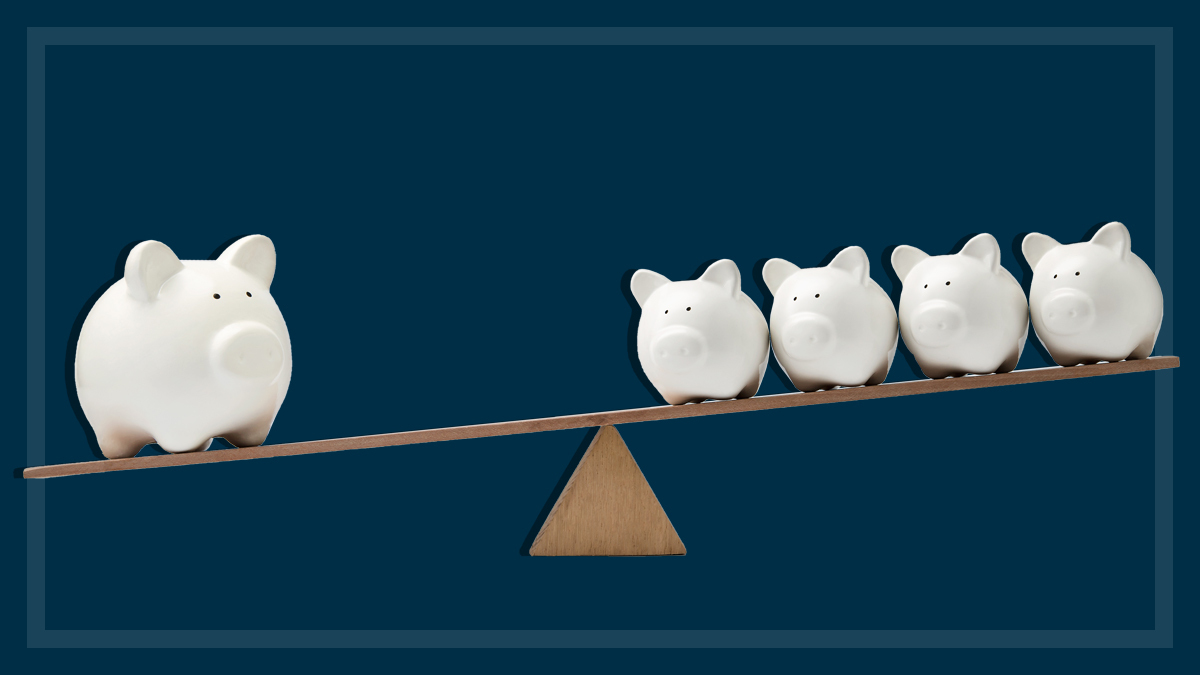Get our independent lab tests, expert reviews and honest advice.
How to compare super funds

Need to know
- Look for a strong long-term performer to get the most out of your super
- Fees are also important
- Remember to compare 'apples with apples' when lining up super funds
Comparing super funds isn’t as easy as it should be. Funds often haven’t helped on this front, reporting performance and fees in differing (and often confusing) ways.
From mid-2021, the government will introduce a MySuper product comparator tool that, hopefully, will help Australians make decisions about their super fund and whether they should change to a better option.
Super Consumers Australia senior policy advisor Rebecca Curran says the announcement is a positive step.
There is a lack of consumer-friendly comparison tools allowing people to compare super funds
Rebecca Curran, senior policy advisor, Super Consumers Australia
“At the moment, there is a lack of consumer-friendly comparison tools allowing people to compare super funds,” she said.
Hopefully, this tool will speed up the process of comparing funds. In the meantime, our simple tips will also help you work out the best super fund to make the most of your retirement savings.
In it for the long haul
Superannuation is a long-term investment. Look for good performance over a five to 10 year period, rather than exceptional performance for just a year or less.
When comparing funds on performance, it’s important to make sure you’re comparing apples with apples. This means making sure the funds have reported their returns in the same way (e.g. some funds report their returns after deducting some fees and taxes, some don’t) and over the same period.
Look for good performance over a five to 10 year period, rather than exceptional performance for just a year or less
Fund performance is important because it will affect the income (and quality of life) you’ll have in retirement. The Productivity Commission found that a person in one of the top MySuper products (which it defined as those in the top quarter of funds by performance) would retire with $660,000 more than someone who was in a bottom-quarter fund across their working life.
Another way to look at this is that the difference between a top fund and a low-performing fund is 13 years of lost pay.
CHOICE tip: Long-term performance is key.
Understanding risk levels in your super
The right risk level for your super will depend on your age and how close you are to retirement. These are the broad categories of risk:
Conservative (mostly or all cash)
Low returns in the long term
Balanced (shares, fixed interest, other asset classes e.g. property, infrastructure, cash)
Higher returns in the long term
High risk/high growth (mostly or all shares)
Highest returns in the long term
Higher fees, lower returns?
Fees have long been a vexed issue in the super realm, and lowering fees was one of the main aims of the government’s MySuper initiative.
Making sure you’re not being overcharged can make a massive difference to your long-term financial health.
It may seem logical that you’d get a better product for higher fees, but this isn’t necessarily true. In fact, the Productivity Commission found that higher fees are actually associated with lower returns.
Each MySuper product has a product dashboard that shows you how much you’ll pay on fees for a $50,000 balance.
Many funds also have calculators so you can work out a more exact figure for what you’d pay.
CHOICE tip: Remember to factor in fees when choosing a super fund.
The ‘one percent’ rule
It may be more difficult to find the fees for a choice product. But if you’re looking at these products, make sure you factor in all the different types of fees a fund may charge. If in doubt, ask the fund for the total fees.
A very general rule of thumb is that if you’re paying more than one percent of your balance in fees, you should make sure you’re getting value for money. The average fee for a MySuper product (on a $50,000 balance, as of May 2020) on APRA’s heatmap is 1.09%. Some super products have fees that are considerably lower than this, with the cheapest charging only 0.21%.
The table below shows the best-performed MySuper products (over five years) among those that earned the highest rating – a ‘white’ light – on the Australian Prudential Regulation Authority’s (APRA) heatmap:
| Fund name | Net investment return (five year as at 30 June 2019)* | Total fees on a $50,000 balance** |
|---|---|---|
| Hostplus | 9.65% | 1.07% |
| Australian Super | 9.48% | 0.87% |
| Max Super | 9.37% | 1.12% |
| UniSuper | 9.36% | 0.74% |
| Cbus | 9.21% | 1.05% |
| MTAA Super Fund | 9.08% | 0.89% |
| Media Super | 8.48% | 1.01% |
| HESTA | 8.35% | 1.03% |
| Club Super | 8.31% | 1.15% |
| Vision Super | 8.23% | 0.98% |
*APRA defines net investment return as “return of the product/lifecycle stage after investment-related fees, costs and taxes have been deducted”.
**APRA defines total fees as including administration fees, investment fees and indirect cost ratio.
What price advice?
Some funds promote the advice they offer to members as a point of difference. But given that the differences between the best-performing funds and underperformers can run to hundreds of thousands of dollars, this shouldn’t be a key factor when comparing funds.
Further, it isn’t easy to determine which funds offer their members the best advice. Most funds will give you simple advice for free and this may be enough for many people. You can also access some good free resources, such as ASIC’s Moneysmart.
Freedom of choice
Similarly, some super funds promote themselves as being specially designed for workers in a particular industry. But you’re generally free to join most funds whatever job you have.
The benefit of being in a high-performing fund will usually outweigh any advantage (such as tailored insurance) of being in a fund that’s claimed to suit the kind of work you do.
CHOICE tip: Don’t be swayed by extras or special features you won’t use.
Ethical super
You may have seen headlines about ethical super funds outperforming their peers. But this includes several of the large mainstream funds that aren’t certified as ethical.
The important thing to be clear on is how the particular option you’re interested in compares with its peers on performance and fees. Also, make sure you can have a look at what the fund is investing in to to check it aligns with your values.
See our series on ethical super for more information on what to look for if you go down this path.
CHOICE tip: Do your research if you want to invest your super ethically.
Do I need a financial advisor to help me choose a super fund?
CHOICE’s finance experts say you probably don’t need a financial advisor or planner to sort out the basics of your super.
But if you’ve taken advantage of the free advice available from your fund, and government resources such as ASIC’s Moneysmart and still feel you need advice, see our guide on choosing a good financial planner. We strongly recommend a fee-for-service arrangement, rather than paying commission to an advisor.
There are also a range of commercial comparator sites that can help you compare and select a super fund. But be aware that some may take payment from certain funds, which can influence how they’re displayed on the site.





